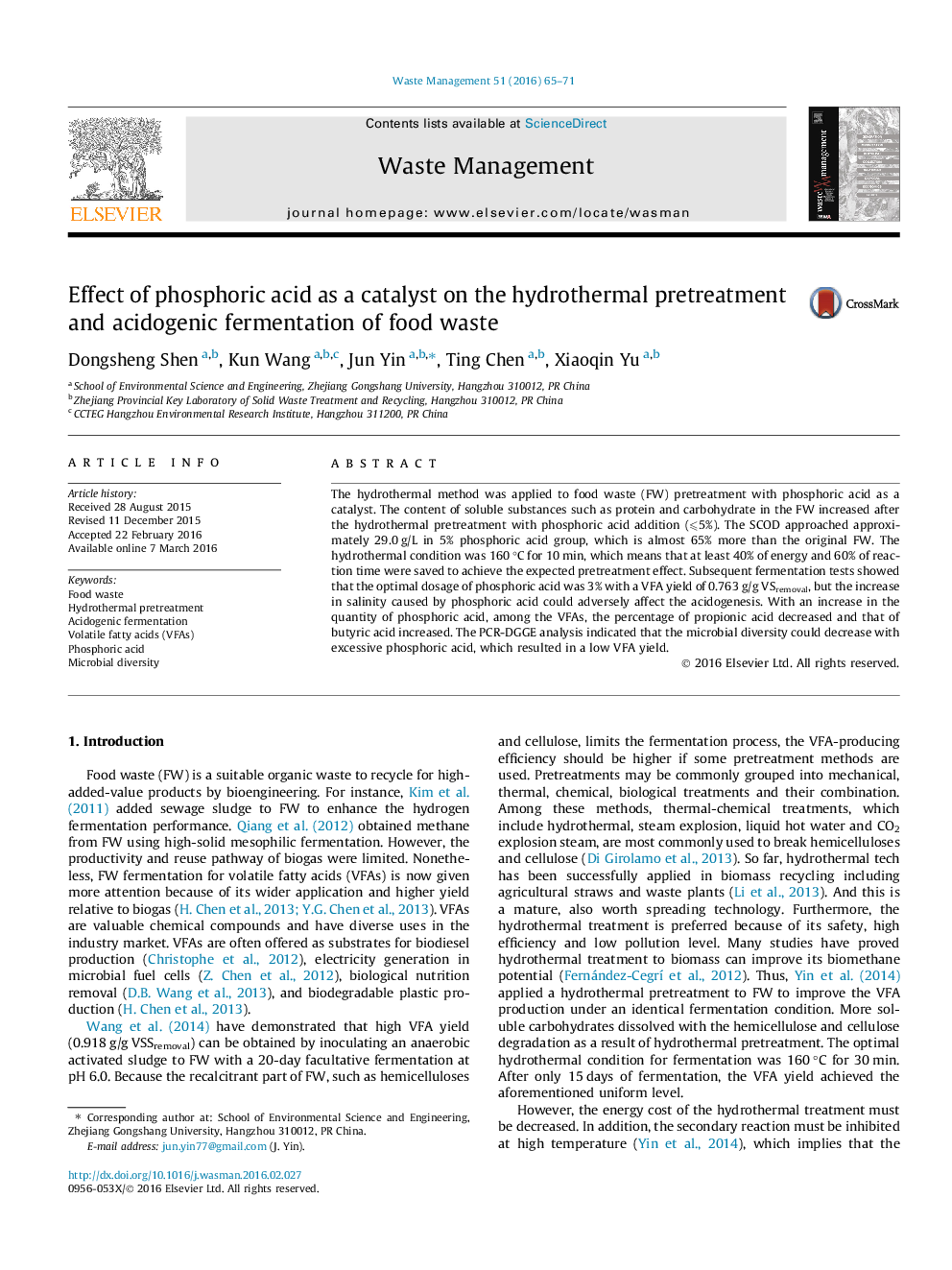| Article ID | Journal | Published Year | Pages | File Type |
|---|---|---|---|---|
| 6353649 | Waste Management | 2016 | 7 Pages |
â¢The hydrothermal method was applied to food waste pretreatment with phosphoric acid as a catalyst.â¢The optimal pretreatment effect was achieved at 160 °C for 10-min hydrothermal reaction with 5% phosphoric acid.â¢The optimal dosage of phosphoric acid was 3% with a VFA yield of 0.763 g/g VSremoval.â¢The increase in salinity caused by phosphate could adversely affect the acidogenesis.
The hydrothermal method was applied to food waste (FW) pretreatment with phosphoric acid as a catalyst. The content of soluble substances such as protein and carbohydrate in the FW increased after the hydrothermal pretreatment with phosphoric acid addition (⩽5%). The SCOD approached approximately 29.0 g/L in 5% phosphoric acid group, which is almost 65% more than the original FW. The hydrothermal condition was 160 °C for 10 min, which means that at least 40% of energy and 60% of reaction time were saved to achieve the expected pretreatment effect. Subsequent fermentation tests showed that the optimal dosage of phosphoric acid was 3% with a VFA yield of 0.763 g/g VSremoval, but the increase in salinity caused by phosphoric acid could adversely affect the acidogenesis. With an increase in the quantity of phosphoric acid, among the VFAs, the percentage of propionic acid decreased and that of butyric acid increased. The PCR-DGGE analysis indicated that the microbial diversity could decrease with excessive phosphoric acid, which resulted in a low VFA yield.
